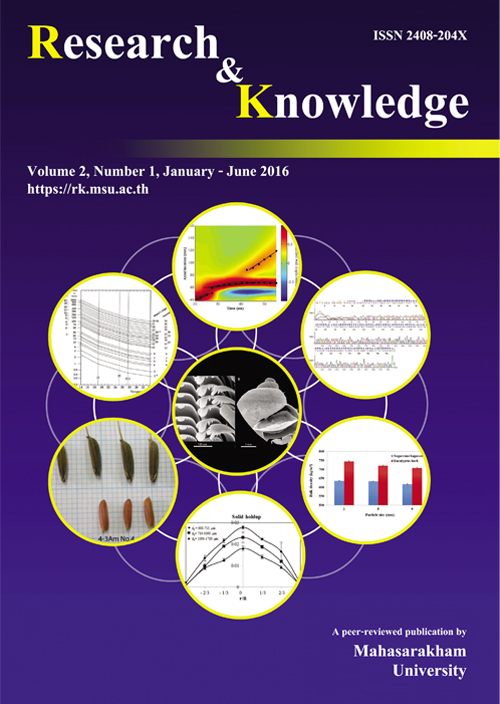Medaka as model animal and current status of medaka biological resources
Keywords:
Medaka, photoperiod, salinity, lower temperature, resourcesAbstract
The medaka species is used as a model animal throughout the world. As an experimental animal, it is similar to zebrafi sh but has important distinguishing features. As it lives in the temperate zone, medaka spawning is infl uenced by photoperiods and circadian rhythms. Medaka can adapt to lower temperatures in winter and higher temperatures in summer. Adaptation to high salinity has also been observed. Medaka research has been supported by important biological resources hosted by the National Bio-Resource Project (NBRP) since 2002. NBRP Medaka is a central repository of medaka resources that provides the research community with fi sh, cDNA/BAC/fosmid materials, hatching enzyme, useful databases and, more recently, a TILLING library for mutant screening and a genome editing platform based on CRISPR-Cas9. NBRP Medaka continues to support the medaka research community by enhancing productivity, continuity and reproducibility.
References
Awaji, M. and Hanyu, I. 1988. Effects of water temperature and photoperiod on the beginning of spawning season in the orange-red type medaka: Reproductive biology. Zoological Science 5, 1059-1064.
Imai, S., Koyama, J. and Fujii, K. 2007. Effects of estrone on full life cycle of Java medaka (Oryzias javanicus), a new marine test fi sh. Environmental Toxicology and Chemistry 26, 726-731.
Inoue, K. and Takei, Y. 2002. Diverse adaptability in Oryzias species to high environmental salinity. Zoological Science 19, 727-734.
Inoue, K. and Takei, Y. 2003. Asian medaka fi shes offer new models for studying mechanisms of seawater adaptation. Comparative Biochemistry and Physiology Part B: Biochemistry and Molecular Biology 136, 635-645.
Iwamatsu, T. 1978. Studies on oocyte maturation of the medaka, Oryzias latipes. VI. Relationship between the circadian cycle of oocyte maturation and activity of the pituitary gland. Journal of Experimental Zoology 206, 355-363.
Iwamatsu, T. 1994. Stages of normal development in the medaka Oryzias latipes. Zoological Science 11, 825- 839.
Iwamatsu, T. 2004. Stages of normal development in the medaka Oryzias latipes. Mechanisms of Development 121, 605-618.
Kang, C.-K., Tsai, S.-C., Lee, T.-H. and Hwang, P.-P. 2008. Differential expression of branchial Na+/K+-ATPase of two medaka species, Oryzias latipes and Oryzias dancena, with different salinity tolerances acclimated to fresh water, brackish water and seawater. Comparative Biochemistry and Physiology Part A: Molecular & Integrative Physiology 151, 566-575.
Kang, C.-K., Yang, W.-K., Lin, S.-T., Liu, C.-C., Lin, H.- M., Chen, H.-H., Cheng, C.-W., Lee, T.-H. and Hwang, P.-P. 2013. The acute and regulatory phases of time-course changes in gill mitochondrion-rich cells of seawater-acclimated medaka (Oryzias dancena) when exposed to hypoosmotic environments. Comparative Biochemistry and Physiology Part A: Molecular & Integrative Physiology 164, 181-191.
Kawahara, A., Yabe, T., Ansai, S., Takada, S. and Kinoshita, M. 2015. Genome editing in zebrafi sh and medaka. Targeted genome editing using site-specific nucleases, pp119-131. Springer.
Kirchmaier, S., Naruse, K., Wittbrodt, J. and Loosli, F. 2015. The genomic and genetic toolbox of the teleost medaka (Oryzias latipes). Genetics 199, 905-918.
Koger, C., Teh, S. and Hinton, D. 1999. Variations of light and temperature regimes and resulting effects on reproductive parameters in medaka (Oryzias latipes). Biology of Reproduction 61, 1287-1293.
Naruse, K., Sakaizumi, M. and Shima, A. 1994. Medaka as a model organism for research in experimental biology. The Fish Biology Journal Medaka 6, 47-52.
Ogoshi, M., Kato, K., Takahashi, H., Ikeuchi, T., Abe, T. and Sakamoto, T. 2012. Growth, energetics and the cortisol-hepatic glucocorticoid receptor axis of medaka (Oryzias latipes) in various salinities. General and Comparative Endocrinology 178, 175-179.
Sampetrean, O., Iida, S.-I., Makino, S., Matsuzaki, Y., Ohno, K. and Saya, H. 2009. Reversible whole-organism cell cycle arrest in a living vertebrate. Cell Cycle 8, 620-627.
Sawara, Y. and Egami, N. 1977. Note on the differences in the response of the gonad to the photoperiod among populations of Oryzias latipes collected in different localities. Annotationes zoologicae japonenses 50, 147-150.
Stemmer, M., Thumberger, T., del Sol Keyer, M., Wittbrodt, J. and Mateo, J. L. 2015. CCTop: An intuitive, fl exible and reliable CRISPR/Cas9 target prediction tool. PLOS ONE (in press).
Ueda, M. and Oishi, T. 1982. Circadian oviposition rhythm and locomotor activity in the medaka, Oryzias latipes. Biological Rhythm Research 13, 97-104.
Urasaki, H. 1975. The role of pineal and eyes in the photoperiodic effect on the gonad of the medaka, Oryzias latipes. Chronobiologia 3, 228-234.
Valdez, D. M., Miyamoto, A., Hara, T., Edashige, K. and Kasai, M. 2005. Sensitivity to chilling of medaka (Oryzias latipes) embryos at various developmental stages. Theriogenology 64, 112-122.
Wittbrodt, J., Shima, A. and Schartl, M. 2002. Medaka-a model organism from the far East. Nature Reviews Genetics 3, 53-64.
Yamamoto, T. 1975. Medaka (killifish): Biology and Strains. Yugakusha.
Yusof, S., Ismail, A., Koito, T., Kinoshita, M. and Inoue, K. 2012. Occurrence of two closely related ricefi shes, Javanese medaka (Oryzias javanicus) and Indian medaka (O. dancena) at sites with different salinity in Peninsular Malaysia. Environmental Biology of Fishes 93, 43-49.
Downloads
Published
How to Cite
Issue
Section
License

This work is licensed under a Creative Commons Attribution-NoDerivatives 4.0 International License.








